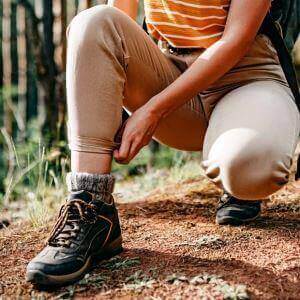 For many young people in the United States, taking a gap year is more than just a break from academics it's a transformative journey of growth and service. One of the most impactful ways to spend that year is by participating in a music and arts teaching volunteer program in Kenya. This unique opportunity allows students to make a tangible difference in under-resourced communities while gaining invaluable life experience. Kenya, with its rich cultural tapestry and strong community spirit, is an ideal destination for aspiring educators and creatives. The country's schools, particularly in rural and informal settlement areas, often lack access to structured arts education. Volunteers help fill this gap by offering music, visual arts, drama, and dance lessons to eager learners. These lessons are more than just artistic enrichment; they serve as a medium for expression, confidence-building, and emotional development for Kenyan youth. Volunteering abroad encourages personal and professional growth. US gap year students often discover new levels of resilience, independence, and creativity while adapting to different cultural contexts. Whether instructing students on basic guitar chords or guiding them through a theater performance, volunteers develop skills in leadership, problem-solving, and cross-cultural communication. These competencies are assets in both higher education and the global workforce. Living and working in Kenya also fosters deep cultural immersion. Volunteers typically stay with host families or in shared housing with other international volunteers, allowing them to experience local customs, language, and cuisine firsthand. Many participants cite this cultural exchange as one of the most enriching aspects of the program. By forming bonds with their students, colleagues, and host communities, volunteers build meaningful relationships that last far beyond their stay. While the program structure can vary, most placements provide orientation, basic training, and ongoing support. Volunteers are expected to come with an open mind and a willingness to engage fully in the experience. Some may come with formal music or art training, while others simply bring a passion for teaching and creativity. Regardless of background, every volunteer has something valuable to contribute. A volunteer music teacher placement in Kenya for gap year students is not just about giving; it's also about receiving. Participants leave with a renewed sense of purpose, global awareness, and an appreciation for the power of education through the arts. They often return home inspired to pursue careers in education, non-profit work, or the arts with a deeper understanding of their global responsibilities. A music and arts teaching volunteer program in Kenya offers US gap year students a rare blend of service, cultural exchange, and personal development. These programs are thoughtfully designed to immerse participants in a completely different cultural environment while offering opportunities to contribute meaningfully to local communities. Through engaging lessons in music, dance, visual arts, or drama, US students help cultivate artistic talent and self-expression among Kenyan youth. In return, volunteers themselves experience profound personal growth, adapting to new surroundings, customs, and educational methods. This journey often becomes a pivotal moment in a student’s life, fostering empathy, resilience, and global perspective. From collaborating with local teachers to organizing student performances, every day presents new challenges and rewards. These experiences are not only enriching but also help young Americans clarify their academic and career goals. Participants return home with expanded worldviews, a deeper appreciation for education, and stories that reflect the strength of human connection across borders. It’s more than just a gap year activity; it’s a life-shaping endeavor that bridges cultures through creativity and education.
For many young people in the United States, taking a gap year is more than just a break from academics it's a transformative journey of growth and service. One of the most impactful ways to spend that year is by participating in a music and arts teaching volunteer program in Kenya. This unique opportunity allows students to make a tangible difference in under-resourced communities while gaining invaluable life experience. Kenya, with its rich cultural tapestry and strong community spirit, is an ideal destination for aspiring educators and creatives. The country's schools, particularly in rural and informal settlement areas, often lack access to structured arts education. Volunteers help fill this gap by offering music, visual arts, drama, and dance lessons to eager learners. These lessons are more than just artistic enrichment; they serve as a medium for expression, confidence-building, and emotional development for Kenyan youth. Volunteering abroad encourages personal and professional growth. US gap year students often discover new levels of resilience, independence, and creativity while adapting to different cultural contexts. Whether instructing students on basic guitar chords or guiding them through a theater performance, volunteers develop skills in leadership, problem-solving, and cross-cultural communication. These competencies are assets in both higher education and the global workforce. Living and working in Kenya also fosters deep cultural immersion. Volunteers typically stay with host families or in shared housing with other international volunteers, allowing them to experience local customs, language, and cuisine firsthand. Many participants cite this cultural exchange as one of the most enriching aspects of the program. By forming bonds with their students, colleagues, and host communities, volunteers build meaningful relationships that last far beyond their stay. While the program structure can vary, most placements provide orientation, basic training, and ongoing support. Volunteers are expected to come with an open mind and a willingness to engage fully in the experience. Some may come with formal music or art training, while others simply bring a passion for teaching and creativity. Regardless of background, every volunteer has something valuable to contribute. A volunteer music teacher placement in Kenya for gap year students is not just about giving; it's also about receiving. Participants leave with a renewed sense of purpose, global awareness, and an appreciation for the power of education through the arts. They often return home inspired to pursue careers in education, non-profit work, or the arts with a deeper understanding of their global responsibilities. A music and arts teaching volunteer program in Kenya offers US gap year students a rare blend of service, cultural exchange, and personal development. These programs are thoughtfully designed to immerse participants in a completely different cultural environment while offering opportunities to contribute meaningfully to local communities. Through engaging lessons in music, dance, visual arts, or drama, US students help cultivate artistic talent and self-expression among Kenyan youth. In return, volunteers themselves experience profound personal growth, adapting to new surroundings, customs, and educational methods. This journey often becomes a pivotal moment in a student’s life, fostering empathy, resilience, and global perspective. From collaborating with local teachers to organizing student performances, every day presents new challenges and rewards. These experiences are not only enriching but also help young Americans clarify their academic and career goals. Participants return home with expanded worldviews, a deeper appreciation for education, and stories that reflect the strength of human connection across borders. It’s more than just a gap year activity; it’s a life-shaping endeavor that bridges cultures through creativity and education.
Key Facts About Kenya Music & Arts Volunteer Program
| Feature | Details |
|---|---|
| Program Type | Music and Arts Teaching Volunteer Program |
| Target Audience | US / United States Gap Year Students |
| Location | Kenya (urban and rural communities) |
| Areas of Focus | Music, Visual Arts, Dance, Drama |
| Application Requirements | Application, references, background check |
| Ideal Duration | 2 weeks to 6 months |
| Housing | Host families or volunteer accommodations |
| Benefits for Volunteers | Cultural exchange, teaching skills, global awareness |
| Benefits for Kenyan Students | Access to arts education, creative skill development |
| Best Time to Apply | 3 to 6 months before planned travel |
Benefits of Volunteering in Kenya for US Gap Year Music Students
Volunteering in Kenya as part of a gap year is an enriching experience for US students who are passionate about music. It provides an exceptional opportunity to explore East African culture while making a meaningful contribution to the lives of young learners. Kenyan schools, particularly those in rural or underserved regions, often lack structured music programs. Volunteers fill this void by leading classes in instrumental instruction, vocal training, and music theory, bringing new energy and creative tools to local education. The environment in Kenya is welcoming and inspiring. Local students show great enthusiasm and curiosity when introduced to different music styles and techniques. This mutual exchange of knowledge and creativity fosters a powerful sense of purpose and collaboration. As volunteers engage with students in community centers or public schools, they also learn about Kenya’s own musical traditions, including drumming, singing, and dance, allowing for a rich cultural exchange that benefits both sides. This kind of work also supports the professional development of the volunteers. Teaching music abroad challenges young Americans to adapt, communicate across cultures, and solve problems in real-time. These experiences build resilience, leadership, and cultural fluency. For many, this becomes a stepping stone toward a career in education, the arts, or international development. One particularly transformative opportunity is a volunteer selection in Kenya for gap year students, which blends service, skill-building, and immersive learning into a once-in-a-lifetime adventure. Living with host families or in volunteer housing enables participants to fully immerse themselves in daily life. From learning Swahili phrases to enjoying local cuisine and traditions, volunteers form genuine connections with the people around them. These relationships often become the most cherished part of the experience, offering insight into a way of life that is both different and deeply human. In addition to enhancing the lives of Kenyan students, volunteers return home with a renewed appreciation for the power of music and education. They often develop a heightened sense of global awareness, a stronger sense of personal confidence, and a deeper understanding of their responsibility to contribute positively to the world. These experiences don’t just create memories they help shape the future paths of both the students they teach and the volunteers themselves. Whether they’re leading a choir rehearsal, helping a young student find their voice, or organizing a community-wide arts performance, US gap year students make a lasting impact in both practical and emotional ways. They become mentors and role models, sharing their knowledge while also learning from the resilience and enthusiasm of the students. In the process, they often find clarity in their own academic and career aspirations. Beyond the classroom, the lessons learned from navigating a new culture, adapting to unfamiliar settings, and forming deep personal connections remain with them long after the program ends. Many former volunteers speak of the program as a defining chapter in their lives, one that fostered lifelong friendships, sparked a commitment to service, and revealed the transformative potential of global education and artistic collaboration.
What Makes Music Volunteering in Kenya Ideal for US Gap Year Teens?
Music volunteering in Kenya offers a rare and rewarding opportunity for US gap year teens seeking meaningful travel and cultural exchange. Unlike traditional tourist experiences, these programs are built around immersive learning and direct impact. Volunteers work with local schools and community centers to introduce or enhance music education, an area that is often underfunded and understaffed in Kenya. For teens with a passion for music, this experience can be both empowering and transformative. Kenya's diverse musical heritage, which includes traditional drumming, Swahili folk music, and modern African pop, offers a rich cultural backdrop for teaching and learning. US teens bring their own musical skills from classical to jazz to contemporary genres and in turn, learn about local rhythms and instruments. This mutual exchange fosters an environment of respect, curiosity, and creativity. Students often perform together, creating bonds that transcend language and background. Teaching music abroad helps teens develop practical life skills. They learn to lead a classroom, plan lessons, communicate across cultures, and adapt to unfamiliar environments. These competencies support their growth into mature, capable individuals ready for college and beyond. Living with host families or in volunteer housing further deepens their cultural awareness and social empathy. Many participants describe the experience as eye-opening and inspiring. Not only do they get the chance to make a meaningful impact in the lives of others, but they also experience a profound transformation in themselves. By engaging directly with students and immersing themselves in a new culture, they come to see the world from different perspectives. Music becomes a bridge that connects diverse backgrounds, languages, and experiences, showing its incredible power to unite. Volunteers gain a deeper appreciation for the role music plays in both education and emotional well-being. This renewed understanding shapes their sense of purpose and often influences their future goals. For many, it becomes the foundation for a lifelong commitment to service, education, or the arts. For any US gap year teen with a love for music and a heart for service, volunteering in Kenya offers an unforgettable journey of impact, connection, and personal discovery that resonates for years to come.
Arts Education Volunteer Opportunities for United States Students in Kenya
 Arts education volunteer opportunities in Kenya offer an enriching and impactful path for United States gap year students. These programs are specifically designed to match the creative passions of young volunteers with the needs of schools and communities that lack access to arts education. For students who have interests in visual arts, theater, or dance, volunteering in Kenya provides an ideal setting to both teach and learn. Volunteers are placed in a variety of environments, ranging from rural primary schools to urban community centers, where they conduct workshops, support arts-based curriculum, and lead projects designed to stimulate student creativity. These programs do more than just enhance classroom experiences; they help young learners in Kenya develop self-expression, emotional awareness, and creative thinking. In many schools, arts education is not prioritized due to limited resources, which makes the contribution of volunteers deeply valuable. American students can bring fresh ideas, new techniques, and inspiring energy into classrooms where enthusiasm for the arts is high but opportunities are limited. From painting murals with local children to producing end-of-term plays, the daily work of a volunteer is both dynamic and fulfilling. Volunteers are encouraged to collaborate with local teachers to ensure that their lessons are culturally sensitive and relevant. This creates a collaborative environment where both parties grow. Students who participate often report that they gain just as much as they give developing leadership, teaching, and communication skills that serve them long after their gap year. Many organizations offering these placements provide accommodations, orientation, and local support networks to ensure a smooth and immersive experience. Volunteers are typically greeted with cultural briefings and introductions to their host communities, which allow them to acclimate and feel welcomed from day one. These support systems are vital in helping students adjust to the new environment and succeed in their roles. Living in Kenya offers a window into the rhythms of daily life that is entirely different from that of the United States. Volunteers often reside with host families or in shared housing, which fosters authentic cultural immersion. By participating in local routines, meals, traditions, and celebrations, students form deep connections with their hosts and neighbors, creating friendships that often last beyond their time in the country. Arts education volunteer opportunities provide a unique blend of service, creativity, and cultural exchange for United States students looking to spend their gap year making a real difference. These programs are thoughtfully structured to offer hands-on experiences where students can share their artistic talents and learn about new cultural expressions at the same time. Whether teaching drawing techniques, leading improvisational theater games, or choreographing dance routines, volunteers contribute directly to students' growth and self-confidence. These efforts go beyond artistic development they promote communication, teamwork, and problem-solving among Kenyan learners. For American students, this kind of work builds a powerful set of life skills, including adaptability, empathy, and cross-cultural understanding. The bonds that are formed through creative collaboration often grow into lifelong friendships and open-minded perspectives. By stepping into classrooms far from home, volunteers gain a deeper appreciation for the universal nature of the arts. They see firsthand how creativity can transcend language barriers and connect people in meaningful ways. This transformative journey leaves students with memories that inspire future study, advocacy, and career paths rooted in purpose and global connection.
Arts education volunteer opportunities in Kenya offer an enriching and impactful path for United States gap year students. These programs are specifically designed to match the creative passions of young volunteers with the needs of schools and communities that lack access to arts education. For students who have interests in visual arts, theater, or dance, volunteering in Kenya provides an ideal setting to both teach and learn. Volunteers are placed in a variety of environments, ranging from rural primary schools to urban community centers, where they conduct workshops, support arts-based curriculum, and lead projects designed to stimulate student creativity. These programs do more than just enhance classroom experiences; they help young learners in Kenya develop self-expression, emotional awareness, and creative thinking. In many schools, arts education is not prioritized due to limited resources, which makes the contribution of volunteers deeply valuable. American students can bring fresh ideas, new techniques, and inspiring energy into classrooms where enthusiasm for the arts is high but opportunities are limited. From painting murals with local children to producing end-of-term plays, the daily work of a volunteer is both dynamic and fulfilling. Volunteers are encouraged to collaborate with local teachers to ensure that their lessons are culturally sensitive and relevant. This creates a collaborative environment where both parties grow. Students who participate often report that they gain just as much as they give developing leadership, teaching, and communication skills that serve them long after their gap year. Many organizations offering these placements provide accommodations, orientation, and local support networks to ensure a smooth and immersive experience. Volunteers are typically greeted with cultural briefings and introductions to their host communities, which allow them to acclimate and feel welcomed from day one. These support systems are vital in helping students adjust to the new environment and succeed in their roles. Living in Kenya offers a window into the rhythms of daily life that is entirely different from that of the United States. Volunteers often reside with host families or in shared housing, which fosters authentic cultural immersion. By participating in local routines, meals, traditions, and celebrations, students form deep connections with their hosts and neighbors, creating friendships that often last beyond their time in the country. Arts education volunteer opportunities provide a unique blend of service, creativity, and cultural exchange for United States students looking to spend their gap year making a real difference. These programs are thoughtfully structured to offer hands-on experiences where students can share their artistic talents and learn about new cultural expressions at the same time. Whether teaching drawing techniques, leading improvisational theater games, or choreographing dance routines, volunteers contribute directly to students' growth and self-confidence. These efforts go beyond artistic development they promote communication, teamwork, and problem-solving among Kenyan learners. For American students, this kind of work builds a powerful set of life skills, including adaptability, empathy, and cross-cultural understanding. The bonds that are formed through creative collaboration often grow into lifelong friendships and open-minded perspectives. By stepping into classrooms far from home, volunteers gain a deeper appreciation for the universal nature of the arts. They see firsthand how creativity can transcend language barriers and connect people in meaningful ways. This transformative journey leaves students with memories that inspire future study, advocacy, and career paths rooted in purpose and global connection.
Where Can US Gap Year Students Teach Arts in Kenyan Schools?
Many US students take gap years to explore the world, develop their skills, and contribute to global communities. For those interested in arts education, Kenya presents a meaningful opportunity to volunteer in under-resourced schools and community centers. The country’s vibrant culture and enthusiastic learners make it an ideal environment for creative exchange and collaboration. Gap year programs teaching painting and crafts in Kenya provide hands-on experience in real classrooms, leaving a lasting impact on both students and volunteers.
- Primary and Secondary Schools: These institutions welcome volunteers to assist in arts and crafts activities. Volunteers often lead sessions in drawing, painting, and collage, fostering creativity among students who rarely get structured art classes. With basic supplies and guided projects, US volunteers help learners express themselves and boost their confidence through artistic exploration.
- Community Youth Centers: Many urban and rural community hubs host after-school programs. Volunteers engage children and teens in craft projects such as bead-making, fabric work, and recycled art. These creative spaces also double as platforms for mentorship, where US students can share their experiences and inspire local youth to pursue education and creativity.
- Special Needs Programs: Art is a powerful tool for inclusion. Volunteers may support programs for children with disabilities, using painting and crafts as forms of therapy and communication. By adapting projects to diverse abilities, gap year students play a vital role in encouraging participation and building supportive relationships.
- Women and Girls Empowerment Workshops: Some initiatives focus on teaching art and craft skills to young women and girls. Volunteers help run workshops in sewing, jewelry-making, or textile arts, which often promote confidence and economic empowerment. These settings allow for meaningful cultural exchange and mutual learning.
US students with a passion for the visual arts and a desire to make a difference can find purpose and connection in Kenya's dynamic learning environments. These placements not only support community development but also provide young Americans with deeper cultural insight, leadership experience, and artistic growth.
How US Gap Year Students Can Join Music and Arts Projects in Kenya
Joining a music and arts volunteer project in Kenya is a deeply rewarding experience for US gap year students looking to make a difference while embracing new cultures. Kenya’s diverse communities are eager for educational support in the creative arts, and there are a variety of programs that welcome passionate young people ready to contribute. From music lessons to painting workshops, students can engage in teaching activities that empower Kenyan youth and promote artistic expression in resource-limited settings. The first step is to research reputable volunteer organizations that offer placements in Kenya. Many well-established nonprofits and travel programs focus on sustainable development and education. US students should look for programs that align with their interests, whether it’s vocal performance, drama, painting, or dance. Online reviews, alumni testimonials, and accreditation are key indicators of a trustworthy organization. Once a program is selected, applicants usually fill out an application form, provide a personal statement, and submit references. Most volunteer programs require a background check and an interview to ensure safety and commitment. Some placements, especially those involving children or schools, may also request prior experience or training in the arts. However, not all require formal credentials a passion for teaching and creativity is often enough. After acceptance, volunteers typically receive pre-departure support, including guidance on visa application, vaccinations, and travel insurance. Once in Kenya, volunteers attend orientation sessions to learn about local culture, teaching expectations, and health and safety guidelines. Many programs arrange homestays or shared volunteer housing, which adds a layer of cultural immersion. Living alongside local families or other international volunteers enriches the experience and helps students understand the daily lives and values of their host community. Teaching music and arts in Kenya may involve working in public schools, youth centers, or nonprofit-run community hubs. Volunteers assist local teachers, lead group activities, and create lesson plans that engage students creatively. Whether organizing a school performance or helping a child learn to play an instrument, volunteers directly contribute to students’ growth, self-esteem, and joy. US students also grow significantly in the process. Immersed in a different cultural and educational landscape, they face real-world challenges that foster leadership, adaptability, and problem-solving. Navigating unfamiliar settings and working closely with students and fellow educators helps them become more empathetic, open-minded individuals. Intercultural communication skills are strengthened daily, as volunteers learn to engage meaningfully with people whose perspectives and lifestyles differ from their own. These experiences stay with students long after their time in Kenya ends. The friendships they build, the personal milestones they reach, and the joy of contributing to something greater than themselves often inspire lasting academic or career changes. Many return home with renewed goals, clearer values, and a deeper commitment to global citizenship. For some, this journey sparks interest in education, international development, or the arts in ways they hadn’t previously imagined. Volunteering in Kenya is more than a trip abroad; it is a transformative chapter filled with personal victories, cultural insights, and enduring impact. It encourages US students to live with greater intention, view the world through a wider lens, and carry forward the lessons of compassion and collaboration wherever life takes them next.
Steps for United States Gap Year Volunteers to Apply for Kenya Roles
Embarking on a volunteer journey in Kenya as a US gap year student requires careful planning, enthusiasm, and a sense of purpose. Music and arts programs across the country welcome young creatives eager to share their talents. The application process is straightforward but requires thoughtful preparation and commitment. The following steps guide students through what to expect and how to get started.
- Research Volunteer Organizations: Begin by identifying reputable organizations that offer music and arts placements in Kenya. Look for programs that align with your creative skills and personal goals. Prioritize organizations with strong reviews, transparent safety policies, and a track record of supporting both volunteers and host communities.
- Complete the Application Process: Most organizations require a written application detailing your background, interests, and motivations. Be prepared to submit references and undergo a background check. This step ensures you're a good fit for the program and committed to making a positive impact.
- Prepare for Pre-Departure Logistics: After acceptance, you'll receive guidance on travel vaccinations, visa requirements, insurance, and packing essentials. Some organizations provide pre-departure orientations online or in person. Preparing early helps reduce stress and ensures a smoother transition upon arrival in Kenya.
- Attend Orientation and Cultural Briefings: Once in Kenya, you'll participate in orientation sessions to understand cultural norms, teaching expectations, and health and safety practices. These briefings are crucial to setting a respectful tone and adapting to your host community.
- Start Your Volunteer Placement: Volunteers may be placed in schools, youth centers, or nonprofit art programs. You'll teach music, painting, or drama, either independently or alongside local teachers. Embrace flexibility and collaboration your creativity and compassion will make a lasting difference.
Getting involved in a music and arts volunteer program in Kenya is a rewarding journey of cultural exchange and community service. With thoughtful preparation and an open heart, US gap year students can create a meaningful, lasting impact while growing in profound and unexpected ways.
Cultural and Educational Impact of Teaching Arts in Kenya for US Youth
 Teaching music and arts in Kenya leaves a profound cultural and educational impact not only on the Kenyan students but also on the US gap year volunteers who embark on this meaningful journey. For American students, stepping into a new environment presents the opportunity to experience the world from an entirely fresh perspective. Through arts education, volunteers immerse themselves in Kenya's vibrant culture, gaining firsthand insight into local customs, values, and artistic traditions. This cultural exchange fosters mutual respect and understanding, breaking down stereotypes and building genuine connections. US gap year students who teach arts in Kenya often find themselves transformed by the experience. They learn to navigate challenges such as language barriers, resource limitations, and unfamiliar teaching settings. In doing so, they develop resilience, empathy, and cross-cultural communication skills that serve them in academic, personal, and professional settings for years to come. Collaborating with local educators and co-creating performances or exhibitions with students allows volunteers to contribute creatively while also being inspired by the creativity of their Kenyan counterparts. For Kenyan students, the presence of international volunteers introduces them to new artistic techniques, perspectives, and encouragement. Many students have limited access to arts education, and the presence of passionate, supportive volunteers can spark lasting interest and confidence in their creative abilities. Art becomes not just a subject, but a tool for self-expression and empowerment. Students explore their identity, emotions, and aspirations through drawing, music, or dance in ways that traditional curricula may not allow. Beyond the classroom, volunteers engage in community events, festivals, and local collaborations that deepen their appreciation for the richness of Kenyan culture. These immersive experiences promote global citizenship, encouraging young Americans to become thoughtful, responsible members of an interconnected world. Many return home with clearer academic or career goals and a lasting commitment to social impact, education, or the arts. Teaching arts in Kenya bridges cultural gaps and opens doors on both sides. It cultivates a generation of globally conscious students who understand the importance of creativity, empathy, and collaboration. For US gap year students, participating in arts education projects provides them with the opportunity to contribute meaningfully to underserved communities while expanding their own global perspectives. Whether it’s through a shared song, a group painting, or a community performance, these collaborative efforts build strong emotional connections between volunteers and local students. Through these interactions, American students witness firsthand how art transcends language and cultural differences, becoming a universal form of communication and expression. These exchanges are not only enriching but deeply transformative. Volunteers often develop a heightened sense of purpose, increased emotional intelligence, and a clearer understanding of their potential roles as changemakers in the global community. The memories, challenges, and achievements from their time in Kenya serve as powerful reminders of the value of cultural exchange. The lessons gained continue to influence US gap year students long after they leave. Whether in college, careers, or community work, they carry forward the experiences that shaped them empowered to lead with empathy and inspired to support education and the arts around the world.
Teaching music and arts in Kenya leaves a profound cultural and educational impact not only on the Kenyan students but also on the US gap year volunteers who embark on this meaningful journey. For American students, stepping into a new environment presents the opportunity to experience the world from an entirely fresh perspective. Through arts education, volunteers immerse themselves in Kenya's vibrant culture, gaining firsthand insight into local customs, values, and artistic traditions. This cultural exchange fosters mutual respect and understanding, breaking down stereotypes and building genuine connections. US gap year students who teach arts in Kenya often find themselves transformed by the experience. They learn to navigate challenges such as language barriers, resource limitations, and unfamiliar teaching settings. In doing so, they develop resilience, empathy, and cross-cultural communication skills that serve them in academic, personal, and professional settings for years to come. Collaborating with local educators and co-creating performances or exhibitions with students allows volunteers to contribute creatively while also being inspired by the creativity of their Kenyan counterparts. For Kenyan students, the presence of international volunteers introduces them to new artistic techniques, perspectives, and encouragement. Many students have limited access to arts education, and the presence of passionate, supportive volunteers can spark lasting interest and confidence in their creative abilities. Art becomes not just a subject, but a tool for self-expression and empowerment. Students explore their identity, emotions, and aspirations through drawing, music, or dance in ways that traditional curricula may not allow. Beyond the classroom, volunteers engage in community events, festivals, and local collaborations that deepen their appreciation for the richness of Kenyan culture. These immersive experiences promote global citizenship, encouraging young Americans to become thoughtful, responsible members of an interconnected world. Many return home with clearer academic or career goals and a lasting commitment to social impact, education, or the arts. Teaching arts in Kenya bridges cultural gaps and opens doors on both sides. It cultivates a generation of globally conscious students who understand the importance of creativity, empathy, and collaboration. For US gap year students, participating in arts education projects provides them with the opportunity to contribute meaningfully to underserved communities while expanding their own global perspectives. Whether it’s through a shared song, a group painting, or a community performance, these collaborative efforts build strong emotional connections between volunteers and local students. Through these interactions, American students witness firsthand how art transcends language and cultural differences, becoming a universal form of communication and expression. These exchanges are not only enriching but deeply transformative. Volunteers often develop a heightened sense of purpose, increased emotional intelligence, and a clearer understanding of their potential roles as changemakers in the global community. The memories, challenges, and achievements from their time in Kenya serve as powerful reminders of the value of cultural exchange. The lessons gained continue to influence US gap year students long after they leave. Whether in college, careers, or community work, they carry forward the experiences that shaped them empowered to lead with empathy and inspired to support education and the arts around the world.
How Teaching Arts in Kenya Enriches US Gap Year Student Experiences
Participating in arts education initiatives in Kenya is a transformative experience for US gap year students. The unique opportunity to teach music, drama, or visual arts in local schools or community centers allows American students to grow both personally and academically. They are not only instructors but also learners, absorbing the traditions, rhythms, and values of a different culture. This dual exchange promotes a sense of empathy, understanding, and global awareness that leaves a lasting impact. As volunteers step into classrooms with limited art supplies and resources, they learn to adapt and innovate. They develop problem-solving skills and gain confidence in leading creative projects, even with minimal tools. Teaching in this setting encourages resilience, collaboration, and patience qualities that prove valuable in college and future careers. Students often report returning home with a renewed passion for education, creativity, and international service. Beyond the practical teaching experience, the cultural immersion is unparalleled. Volunteers often live with host families, sharing meals, participating in local traditions, and engaging in community life. These authentic encounters foster mutual respect and help American students view the world from a broader lens. Bonds formed with students and colleagues in Kenya can grow into long-term relationships built on shared artistic experiences and mutual appreciation. Teaching arts fosters a sense of purpose. By guiding children in expressive activities, US students help them develop confidence and discover their voices. Witnessing the joy of students performing a skit or proudly displaying their artwork is incredibly rewarding. The experience validates the importance of creativity as a tool for education and empowerment. Teaching arts in Kenya during a gap year is far more than a volunteer assignment. It is a journey of self-discovery, cultural connection, and meaningful service that impacts every aspect of a student’s life. The opportunity to engage with young learners through music, painting, dance, or drama fosters a strong sense of purpose and fulfillment. Volunteers don’t just teach they inspire and are inspired in return. As students adapt to a different cultural environment, they learn to become flexible, empathetic, and creative problem-solvers. They form lasting relationships with their host families, students, and fellow volunteers, gaining insights into the values and traditions that shape Kenyan society. These bonds often extend well beyond the duration of the program. The memories and skills gained shape students' futures in both subtle and profound ways. Many return home with a deeper appreciation for education, a global mindset, and a commitment to social impact. Their contributions leave lasting impressions on the communities they serve, but the personal transformation they undergo is just as powerful and enduring.



